Laser Hair Removal in Hong Kong
Search and Compare the Best Clinics and Doctors at the Lowest Prices for Laser Hair Removal in Hong Kong
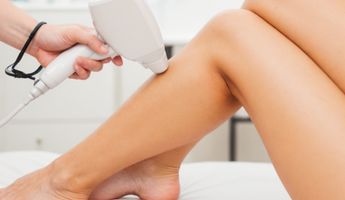
Find the best clinics for Laser Hair Removal in Hong Kong
No clinics available
India offers the best prices Worldwide
Price: $ 3

- Home
- Hong Kong
Compare Before & After Photos of _procedure_photos.phpLaser Hair Removal

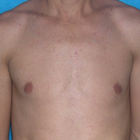
Front view
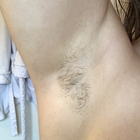
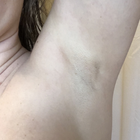
Front view
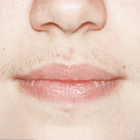
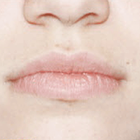
Front view
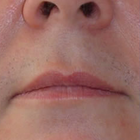
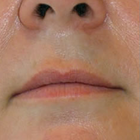
Front view
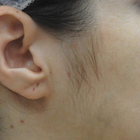
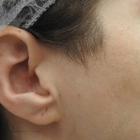
Half-side view

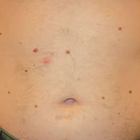
Front view
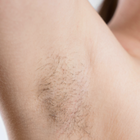

Front view
WHY US?
At Medijump, we're making medical easy. You can search, compare, discuss, and book your medical all in one place. We open the door to the best medical providers worldwide, saving you time and energy along the way, and it's all for FREE, no hidden fees, and no price markups guaranteed. So what are you waiting for?

Free

Best Price

Widest Selection

Risk-Free
What you need to know about Laser Hair Removal in Hong Kong
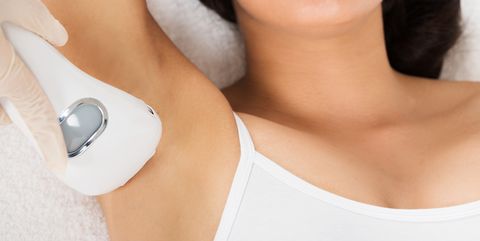
Gone are the days of having to constantly shave, pluck or wax unwanted hair from your body. We all know how very time consuming these things are, not to mention the pain you have to endure when you pluck or wax your unwanted hair.
Today, we have several options we can choose from before we can bid goodbye to such undesirable body hair. One of the more popular hairs removal procedures is Laser hair removal. The process involves targeting the hair follicles with laser light in order to damage them and prevent any future hair growth. In this, laser energy gets absorbed by the hair pigment, resulting in damage to the hair follicle. Such a procedure prevents hair growth in the future, and the effect could be permanent in many cases.
Laser hair removal can be done in any part of your body. The most common areas include the bikini area, underarms, legs, back, and face.
What is the cost of Laser Hair Removal in Hong Kong?
The expenditure for a Laser Hair Removal within Hong Kong can vary greatly on the basis of numerous aspects. The cost is typically dictated by the expanse of the area undergoing treatment; processes carried out on larger surfaces such as the back or legs could be pricier than those on smaller zones like the upper lip. Other influencing factors include the type of laser technology applied, the count of required sessions, and the credibility and expertise of the clinic or professional administering the treatment.
Considering the wide spectrum of prices across different treatment providers, it's immensely advantageous to undertake comprehensive research and consultations prior to selecting a specific clinic. Some clinics may present package deals for multiple sessions, which could be more economically viable compared to paying for each session separately.
Bear in mind that despite the initial high cost of laser hair removal seeming daunting, the long-term benefits frequently render it a cost-efficient resolution. When you contemplate the ongoing costs of other hair removal options like waxing, shaving, or depilatory creams accumulated over a lifetime, laser hair removal can actually save you both time and money in the grand scheme.
What does a Laser Hair Removal Procedure Involve?
During the procedure, your doctor will press a hand-held laser instrument to the skin area where your unwanted hair is. The laser equipment will be adjusted according to the color, thickness, and location of your hair as well as your skin color. Depending on the laser used, you will be asked to wear eye protection to protect your eyes from the laser beam. A cooling gel or a special cooling device will also be used to protect the outer layers of your skin and lessen the risk of side effects. Your doctor might also apply topical anesthetic to your skin to reduce your discomfort.
Your doctor will then activate the laser; the beam will pass through your skin and to your hair follicles. The heat from the laser beam will now damage the hair follicles; as a result, it will prevent hair growth. You might feel a slight discomfort like a warm pinprick but it will be soothed by the cooling gel or device.
How Long Should I Stay in Hong Kong for a Laser Hair Removal Procedure?
Laser hair removal is done in small areas of your body like your upper lip usually lasts for only a few minutes. In larger areas such as your back, it might take an hour or more. After your procedure has been completed, you will be given ice packs, anti-inflammatory cream or cold water to ease your discomfort. You can go home right after you have undergone the treatment. Furthermore, stitches are not required in this procedure. You may need to schedule multiple sessions, usually 4-6, spaced four to six weeks apart for optimal results.
What's the Recovery Time for Laser Hair Removal Procedures?
Recovery time after a Laser Hair Removal is typically minimal. Minor redness and swelling may occur but usually resolve within a few hours to a few days. According to health experts, it's essential to avoid sun exposure and use sunscreen to protect the treated area during the recovery period, as skin can be particularly sensitive after treatment. For the first two days, it may seem like the treated area was sunburned. Applying a cool compress and moisturizer will help you with your discomfort. If your face was treated, you will not be allowed to wear makeup if your skin is blistering.
It usually takes 2 to 3 weeks to see any difference. You may schedule your next treatment after 4 or 6 weeks. Note that you need to continuously undergo the treatment until your hair stops growing; this may take 8 to 12 treatments before acquiring full results.
What sort of Aftercare is Required for Laser Hair Removal Procedures?
The heat from the laser will stay in your skin for 24 hours so you need to avoid the gym, sauna, or even taking a hot shower. Doing so will increase the risk of bacteria multiplying and giving you spots. Strictly avoiding the sun before and after your procedure is essential, it is also recommended for you to avoid chemical peels for 2 weeks after your procedure. Applying ice packs to the treated area can also reduce swelling or discomfort.
What's the Success Rate of Laser Hair Removal Procedures?
A Laser Hair Removal technique often has a high success rate, with many people reporting a considerable reduction or full eradication of unwanted hair growth. The patient's skin type, hair colour, and the particular body part being treated are all important variables that can affect how well the operation works. For instance, the technique usually works best on those who have dark hair and pale complexion since this allows for optimal targeting of hair follicles.
Additionally, the Laser Hair Removal's success rate is highly impacted by the practitioner's training and experience. Up to 90% of individuals who undergo the operation under the expert guidance of a qualified specialist will experience a permanent hair reduction. It's always best to consult with a qualified professional at a trusted clinic for personalized advice on the expected outcomes and success rate of laser hair removal for your specific circumstances.
Are there Alternatives to Laser Hair Removal Procedures?
If for any reason, you deem the Laser Hair Removal unfitting, there are alternate routes worth your consideration. These include standard techniques like shaving, waxing, and tweezing, which can be effortlessly performed at home. However, be aware that these options may not ensure enduring solutions to undesired hair growth.
That's where professional treatment alternatives make their entrance. Electrolysis, a process that involves a very slender needle infiltrating each hair follicle to obliterate it using an electrical charge, is one such course of action. Though electrolysis could be more labor-intensive than laser hair removal, it has earned a reputation for its efficacy on all varieties of skin and hair.
Furthermore, there exist depilatory creams designed to chemically disintegrate hair at the surface level of the skin. The outcomes of these creams usually extend beyond the typical duration of shaving effects, but they necessitate routine application. As for any novel skin product, conducting a patch test 24 hours before usage to check for allergic reaction is invariably advised.
Lastly, there's IPL (Intense Pulsed Light) that, despite bearing resemblance to laser hair removal, employs a broad spectrum of high-intensity light influencing the deeper structures of the skin. IPL can additionally serve the purpose of treating skin pigmentation issues as well as acne.
Determining the choice among these alternatives will depend on your specific requirements, lifestyle, and financial plan. It's also vital to discuss your prospective options with a healthcare specialist before settling on a final verdict. They are equipped to dispense comprehensive information and counsel, personalized to your distinct circumstances.
How should you prepare for the Laser Hair Removal Procedure?
Completely getting rid of undesirable hair in certain areas of your body can be quite rewarding and it can certainly boost your self-esteem. Laser hair removal eventually eliminates the need for plucking, shaving or waxing. The common body area where this treatment procedure is done includes armpits, bikini line, upper lip, and legs. Although this treatment procedure is possible in almost all parts of the body, the eyelid area is one exemption.
In choosing the right doctor for your procedure, you have to take note of the following:
- A doctor who specializes in dermatology or cosmetic surgery and has experience with laser hair removal.
- If a physician assistant or a licensed nurse will execute the procedure, make sure that your doctor is available on-site for supervision.
Before your actual treatment procedure, you have to schedule a consultation with your chosen doctor. During your consultation, costs, expected results, and possible risks will be discussed with you. Furthermore, your doctor will also review your medical history and determine whether this procedure is the appropriate treatment for you. You may also be advised to do the following before your scheduled day:
- Avoid sun exposure, typically 6 weeks before your treatment and use sunscreen daily.
- Lighten your skin. Your doctor might also prescribe a skin bleaching cream to lighten your skin if you have a darker skin complexion.
- Avoid plucking, waxing electrolysis 4 weeks before your treatment. These other methods of hair removal might disturb your hair follicle.
- Avoid blood-thinning medications like aspirin or anti-inflammatory drugs.
- Shaving and trimming are recommended a day before your treatment procedure. It gets rid of the hair above the skin that can be burned but at the same time, it leaves the hair shaft intact below the surface.
What are the Potential Risks of Laser Hair Removal?
On the rare occasion, a few individuals could encounter minor side effects like skin irritation and changes in pigment. Skin irritation may present as temporary discomfort, redness and swelling at the site of treatment, generally fading away within hours post procedure. Changes in skin pigmentation could involve skin darkening or lightening. These changes are usually temporary but may turn permanent in rare instances.
Moreover, infrequent but severe risks encompass blistering, scarring, alterations in the skin texture, graying of hair in the treated area, and an unusual surge in hair growth surrounding the treated regions. Keep in mind that these risks more likly escalate if the procedure is conducted by an untrained or novice provider or if post-treatment care guidelines are not adhered to rigorously. For instance, sun exposure weeks leading up to and post treatment can amplify the probability of skin lightening.
Whilst the information presented here has been accurately sourced and verified by a medical professional for its accuracy, it is still advised to consult with your doctor before pursuing a medical treatment at one of the listed medical providers
No Time?
Tell us what you're looking for and we'll reachout to the top clinics all at once
Enquire Now

Popular Procedures in Hong Kong
Prices Start From $1

Prices Start From $5

Prices Start From $16

Prices Start From $5

Recommended Medical Centers in Hong Kong for procedures similar to Laser Hair Removal

- Interpreter services
- Translation service
- Religious facilities
- Medical records transfer
- Medical travel insurance
- Health insurance coordination
- TV in the room
- Safe in the room
- Phone in the room
- Private rooms for patients available

- Interpreter services
- Translation service
- Religious facilities
- Medical records transfer
- Medical travel insurance
- Health insurance coordination
- TV in the room
- Safe in the room
- Phone in the room
- Private rooms for patients available

- Interpreter services
- Translation service
- Religious facilities
- Medical records transfer
- Medical travel insurance
- Health insurance coordination
- TV in the room
- Safe in the room
- Phone in the room
- Private rooms for patients available

- Interpreter services
- Translation service
- Religious facilities
- Medical records transfer
- Medical travel insurance
- Health insurance coordination
- TV in the room
- Safe in the room
- Phone in the room
- Private rooms for patients available

- Interpreter services
- Translation service
- Religious facilities
- Medical records transfer
- Medical travel insurance
- Health insurance coordination
- TV in the room
- Safe in the room
- Phone in the room
- Private rooms for patients available

- Interpreter services
- Translation service
- Religious facilities
- Medical records transfer
- Medical travel insurance
- Health insurance coordination
- TV in the room
- Safe in the room
- Phone in the room
- Private rooms for patients available
Laser Hair Removal in and around Hong Kong
About Hong Kong
The former British colony became a special administrative region of China in 1997, when Britain's 99-year lease of the New Territories, north of Hong Kong Island, expired. Hong Kong is governed under the principle of "one country, two systems", under which China has agreed to give the region a high degree of autonomy and to preserve its economic and social systems for 50 years from the date of the handover.
Hong Kong welcomes an ever-increasing number of medical tourists each year, many of which travel for Laser Hair Removal procedures. Hong Kong is a well-established hub for medical tourism, although it is better known for its quality and cutting-edge procedures than for cost.
Popular Parts of Hong Kong
Hong Kong is a blend of a dynamic cultural landscape with an astonishing skyline, glamorous shopping, as well as one of the world’s top culinary destinations.
- Victoria Peak (The Peak) offers the best view of Hong Kong’s modern skyline. It is the highest point on Hong Kong Island and the most visited spots by tourists. You can ride the tram to the top where you will find the Peak Tower and Peak Galleria. The peak is covered by a large park filled with incredible greenery.
- Big Buddha (Tian Tan Buddha Statue) is located in Lantau Island. It is one of the largest Buddha statues and took 12 years to complete. It is the perfect place for tourists who wish to get away from the hustle and bustle of the city. Surrounded by forest and ocean, the statue gives an incredible view. The best way to reach the Buddha is by riding the Ngong Ping Cable car which will take you on a spectacular ride over the forest.
- Wong Tai Sin Temple is one of the most popular temples in Hong Kong. It was named after the famous monk of yore, Wong Tai Sin. It is said that he has the ability to punish evils, heal the wounded, rescue the dying, and grant whatever is requested. The temple is also known as Sik Sik Yuen and has a traditional Chinese temple style.
- Temple Street Night Market is the best night market for tourists. Starting at 6.00 pm, it is the place to go if you want to taste Hong Kong’s street food. You can also find vendors selling gadgets, trinkets, clothing, household goods, jewelry, and traditional Chinese crafts. The place is brimming with atmosphere and it has served as the backdrop to many movies.
- Hong Kong Disneyland is a wonderful world for any Disney lovers. The park is divided into seven lands: Adventureland, Grizzly Gulch, Main Street, Mystic Point, Fantasy Land, Toy Story Land, and Tomorrowland. Here, you will find various adventures, parades, and musicals. In the evening, you can watch the fireworks over the castle.
- Star Ferry is a beloved icon of the city. It is said that your visit to Hong Kong will never be complete without cruising on the famous ferry. You can see the sparkling landscape of the city while enjoying the refreshing breeze.
Weather and Climate in Hong Kong
Hong Kong’s weather is influenced by the monsoon subtropical climate. The temperature is mostly mild all year round. May to September are the warmest months with an average temperature of 33 °C while mid-December to February are the coldest months with the temperature falling to 10 °C. Spring starts from March and ends in early May and the weather during this season is pleasant with many sunny days, but you can also have foggy, rainy, and stormy days.
The summer in Hong Kong is hot and humid with a perpetual threat of rain showers, thunderstorms, and sometimes even typhoons. Summer lasts for around four months from May to September. With August as the wettest month in the city.
The best time to visit Hong Kong is in the autumn, starting from October to early December when the days are generally sunny and the temperatures range from 22 °C to 28 °C. Winter is the holiday season in the city and the average temperature is around 16 °C to 18 °C but it can drop under 10 °C.
Getting Around in Hong Kong
The main gateway to Hong Kong is the Hong Kong International Airport. The airport is built on reclaimed land on the island of Chek Lap Kok and it serves international destinations to almost every major city in the world, including, Dubai, Amsterdam, Seoul, Canada, Singapore, and Sydney. For affordable travel, budget airlines such as AirAsia, Eastar Jet, and IndiGo are available. There are a wide variety of public transport services to and from the airport. The best options are Airport Express, public buses, and taxis.
To get around Hong Kong, it is best to purchase Tourist Day Tickets which gives you unlimited access to the main MTR and certain Rail lines for HK$65. If you are planning to stay longer in the city, the Octopus Card will be a big help. The card is reusable and can be used for almost every public transportation mode and you can buy the card for HK$150.
One of the fastest and easiest ways to get around the city is by the MTR (Mass Transit Railways) and it is one of the most advanced metro systems on the planet. The MTR operates 11 lines from 06.00 am to 01.00 am. The fare ranges from HK$3.6 to HK$52.6 depending on the distance.
The public bus is a great way to explore Hong Kong, especially the south side of the island and the New Territories. Most buses are double-decker and air-conditioned and it is an affordable way to get around the city and the fares will vary based on the distance traveled. Other public transportation modes such as tram and ferry are also available.
If you need a more flexible way of travel, taxis are easy to find and offer excellent value. There are three types of taxis, the red taxis operate throughout the city except for Lantau Island and the fares start at HK$24. The green taxis only operate in the New Territories and the fares start at HK$20.50. The blue taxis serve Lantau Island and the fares start at HK$19.
Tourist Visas in Hong Kong
Citizens of around 170 countries and territories may visit and stay in Hong Kong without a visa for up to 180 days. Other countries not listed in the visa-free entry such as Albania, Armenia, and Cambodia need to apply and obtain a visa before entering the country. All visitors must have a passport valid for at least one to six months beyond the date of entry to Hong Kong. Visitors can apply for a visa from their nearest Chinese embassy or consulate.
Additional Information
- Local Currency: The official currency is the Hong Kong Dollar. US$1 converts to HK$7.78.
- Money & Payments: Tourists can find ATMs almost everywhere, and most ATMs are linked up to international money systems such as Maestro, Cirrus, and Visa Electron. Credit cards are widely accepted. Tipping is generally not expected and restaurants usually add 10% to 15% service charge to your bill.
- Local Language: Most people in Hong Kong speak Chinese (Cantonese and Mandarin). However, English is also widely spoken since it is one of the government official languages.
- Local Culture and Religion: Many people in Hong Kong either follow Buddhism, Confucianism, or Taoism. Christianity is also one of the major religions in the city. Other religions such as Islam, Sikhism, Hinduism, Judaism, and the Bahá'í Faith are also freely practiced.
- Public Holidays: Hong Kong celebrates major religious holidays such as Lunar New Year, Ching Ming Festival, and Christmas.
Popular Searches
- Plastic Surgery in Thailand
- Dental Implants in Thailand
- Hair Transplant in Thailand
- Breast Augmentation Thailand
- Gastric Sleeve in Thailand
- Gender Reassignment Surgery in Thailand
- Laser Hair Removal in Bangkok
- Botox in Bangkok
- Dermatology in Bangkok
- Breast Augmentation in Bangkok
- Coolsculpting in Bangkok
- Veneers in Turkey
- Hair Transplant in Turkey
- Rhinoplasty in Turkey
- Stem Cell Therapy in Mexico
- Rhinoplasty in Mexico
- Liposuction in Mexico
- Coolsculpting in Tijuana
- Rhinoplasty in Korea
- Scar Removal in Korea
- Gastric Sleeve in Turkey
- Bone Marrow Transplant in India
- Invisalign in Malaysia
- Plastic Surgery in the Dominican Republic
- Tummy Tuck in the Dominican Republic
- Plastic and Cosmetic Surgery in Poland
- Rhinoplasty in Poland
- Hair Implant in Poland
- Dental Implants in Poland
- IVF in Turkey